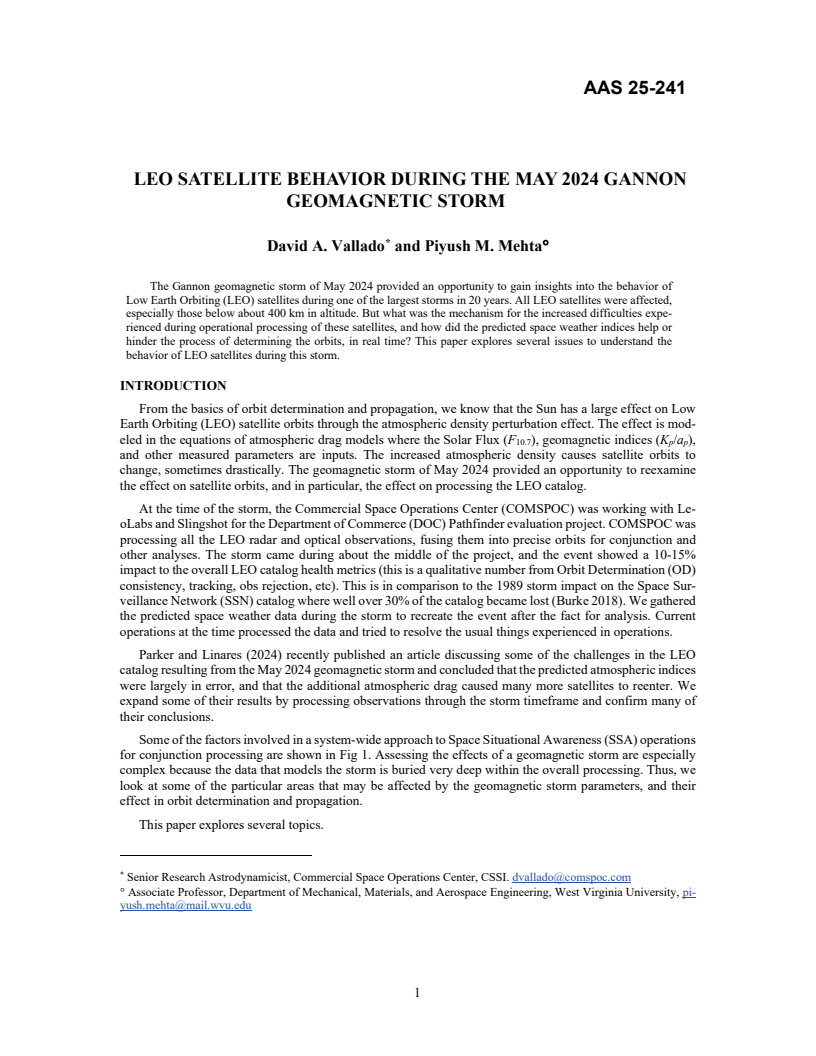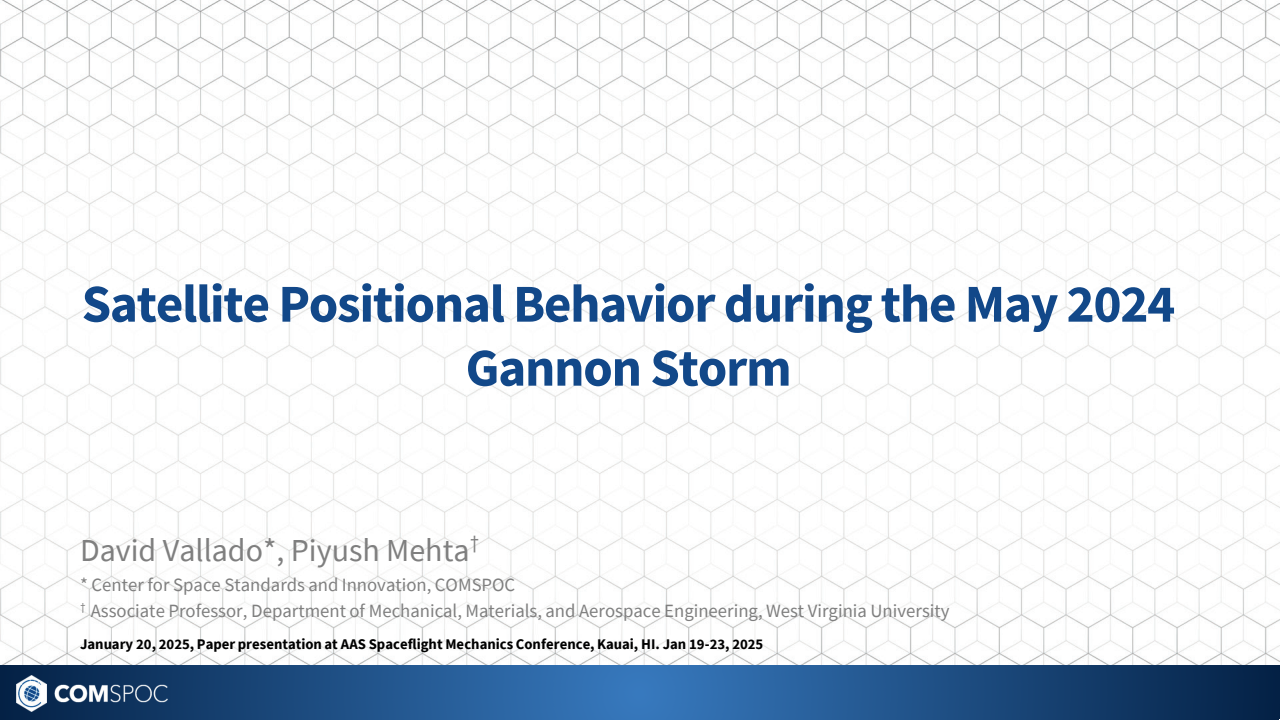LEO satellite behavior during the May 2024 Gannon geomagnetic storm


Id: 377
Type: Conference paper
Published: 01/27/2025
Event: Space Flight Mechanics Conference
Authors:
Click an author to filter the list of related assets below.Abstract:
The Gannon geomagnetic storm of May 2024 provided an opportunity to gain insights into the behavior of Low Earth Orbiting (LEO) satellites during one of the largest storms in 20 years. All LEO satellites were affected, especially those below about 400 km in altitude. But what was the mechanism for the increased difficulties experienced during operational processing of these satellites, and how did the predicted space weather indices help or hinder the process of determining the orbits, in real time? This paper explores several issues to understand the behavior of LEO satellites during this storm.
Keywords:
Click a keyword to filter the list of related assets below.Citation:
Vallado, D.A., and Mehta, P.M., “LEO satellite behavior during the May 2024 Gannon geomagnetic storm,” Space Flight Mechanics Conference, Kauai, HI USA, 25 Jan 2025.
Papers with related authors:




Using Spacebook and Cesium to Promote and Enhance Flight Safety
Read More

Actionability and Persistence Of Conjunction Data
Read More

Actionability and Persistence of Conjunction Data
Read More

Practical issues with using a full gravity field
Read More
Deep operator and SSA collaboration for space sustainability
Read More
Synthetic Covariance Production Using a New Digital Approach
Read More
Contrasting the Inflection Points and Efforts in Space Traffic Coordination and Management
Read More
Addressing the debilitating effects of maneuvers on SSA accuracy and timeliness
Read More
Actionability and Persistence of Conjunction Data
Read More
DEEP OPERATOR AND SSA COLLABORATION FOR SPACE SUSTAINABILITY
Read More


Russian ASAT Debris Cloud Evolution and Risk
Read More
Results of comprehensive STCM data fusion experiment
Read More





Debris Risk Evolution And Dispersal (DREAD) for post-fragmentation modeling
Read More
Sequential Processing of ILRS Observations – Experiences over the last 5 years
Read More

Fragmentation event debris field evolution using 3d volumetric risk assessment
Read More

Application of New Debris Risk Evolution And Dissipation (DREAD) Tool to Characterize Post-Fragmentation Risk
Read More
Orbital Strategies to Mitigate the Solar Exclusion Effect on Space-Based Observation of the Geosynchronous Belt
Read More
New Consolidated Files for Earth Orientation Parameters and Space Weather Data
Read More
Updated Analytical Partials for Covariance Transformations and Optimization
Read More
Sequential Orbit Determination Using Satellite Laser Ranging
Read More
Improved SSA through orbit determination of Two Line Element Sets
Read More


Evaluating Gooding Angles-only Orbit Determination of Space Based Space Surveillance Measurements
Read More
ORBIT DETERMINATION ISSUES AND RESULTS TO INCORPORATE OPTICAL MEASUREMENTS IN CONJUNCTION OPERATIONS
Read More






